The World of Charles and Ray Eames, Barbican | reviews, news & interviews
The World of Charles and Ray Eames, Barbican
The World of Charles and Ray Eames, Barbican
Full heritage of America's pioneers of design celebrated
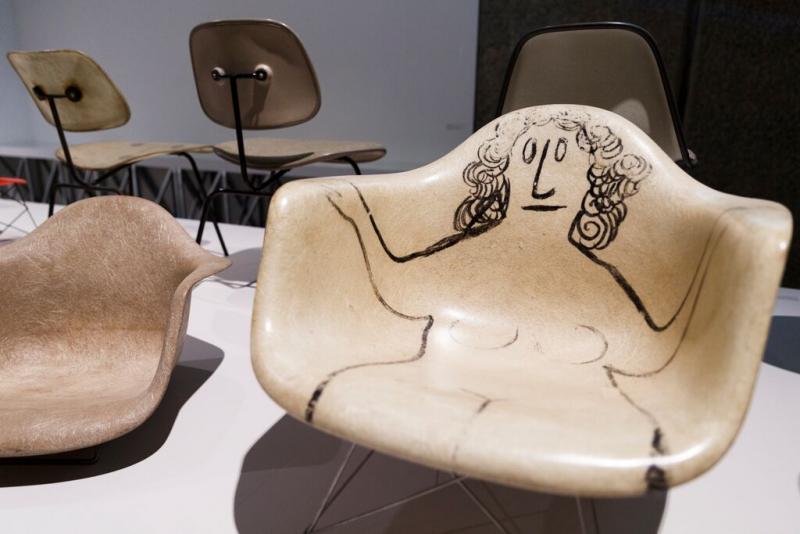
Chairs, chairs, chairs, as far as the eye can see. Plywood or plastic shells, some decorated with hilarious drawings of jolly nudes by Saul Steinberg (main picture), others in all the colours you can imagine – stacks, in rows, alluring and all so familiar. As it is an exhibition, there is an air of reverence – heaven forbid that you actually have a chair to sit on! - but these chairs have been design icons for well over half a century.
Eames chairs have entered the international vocabulary. Their highly successful experiments in moulded plywood, and later imaginative uses of plastic fibreglass for the moulded chair, known to us all, are an exceptional achievement – a useful piece of furniture that is also oddly charming. They embodied, literally, the highest quality of design, which could be tailored to the economic benefits possible through mass production.
 At the other end of the scale is the two-part leather and wood chair, the Eames lounge and ottoman (see Gallery image, below), from the mid-1950s, a very comfortable armchair, its recline adjustable, with an accompanying footstool, owing more than a little to the pared-down aesthetic of the Bauhaus. It is the other ubiquitously recognisable Eames piece of furniture. Both designs have entered the mainstream and, from originals to countless imitations, are still dominant. There are also the wire chairs, completed by a seat pad, and plywood stools, and so much else that is so familiar – and imitated, too – that this exhibition reminds us came first, from the Eames Office.
At the other end of the scale is the two-part leather and wood chair, the Eames lounge and ottoman (see Gallery image, below), from the mid-1950s, a very comfortable armchair, its recline adjustable, with an accompanying footstool, owing more than a little to the pared-down aesthetic of the Bauhaus. It is the other ubiquitously recognisable Eames piece of furniture. Both designs have entered the mainstream and, from originals to countless imitations, are still dominant. There are also the wire chairs, completed by a seat pad, and plywood stools, and so much else that is so familiar – and imitated, too – that this exhibition reminds us came first, from the Eames Office.
The enormous ambition, reaching far beyond personal success, of that astonishing can-do American couple, Charles and Ray Eames, full of energy and optimism, was to show the world the importance of design. It is a relatively modern concept that there is such a thing as design, and the Eames were incredibly influential in changing our perception of it, not only as a discipline, but as a crucial way of looking at the world. They were open to ideas from anywhere; on an intensive visit to India they became absorbed in the use of the banana leaf as a flexible plate for food, used by all strata of society.
Charles Eames (1907-1978) was teaching at the Cranbrook Academy of Art, in the countryside near Detroit, then a hugely successful industrial city, home to Ford Motor Cars, when Ray (1912-1988) turned up, vital, energetic, intelligent and enthusiastic, as a student. She became his second wife, and together they made design history. (Charles and Ray Eames selecting slides, above right © Eames Office LLC.)
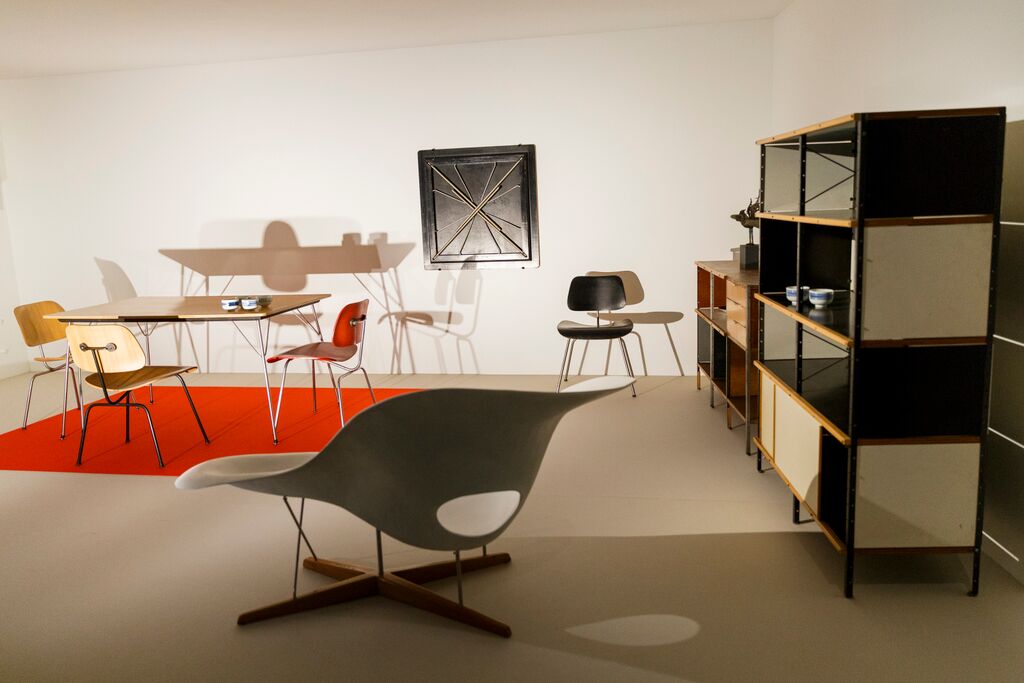 Cranbrook, with postgraduate degrees in art, architecture and design, was founded in the 1930s, joining an already thriving educational complex in Bloomfield Hills, Michigan; much of it is housed in marvellous buildings designed by the Finnish architect Eliel Saarinen, and it is still flourishing. The teaching, on an apprenticeship model, had elements of the Bauhaus, and even more of the Arts and Crafts movement which had been well-nourished in America. (Recreation of the model room for the exhibition For Modern Living, 1949, above)
Cranbrook, with postgraduate degrees in art, architecture and design, was founded in the 1930s, joining an already thriving educational complex in Bloomfield Hills, Michigan; much of it is housed in marvellous buildings designed by the Finnish architect Eliel Saarinen, and it is still flourishing. The teaching, on an apprenticeship model, had elements of the Bauhaus, and even more of the Arts and Crafts movement which had been well-nourished in America. (Recreation of the model room for the exhibition For Modern Living, 1949, above)
The Eames moved to California in 1941 and famously designed their own home, to be used both domestically and for their work, one of the innovative “Case Study Houses”, metal-framed glass boxes – theirs was No. 8, completed in 1949. It was, so to speak, an off-the-shelf house set up from prefabricated components, a steel framework and glass panels, designed to take care of itself, set in a meadow in Pacific Palisades, and looking in certain aspects like a 3D Mondrian. (Eames House courtyard, below right, photograph: Timothy Street-Porter. © Eames Office LLC.)
 How they lived there was of great importance; they worked and played, and displayed none of that rigidity – with everything “just so” – that can so easily characterise International Style architecture. They collected all kinds of objects, blurring Pop and fine art long before that was fashionable. One of the strengths of the Barbican show is the variety of such objects on view, as well as a model of their house and photographs of its exterior and interior. It does look delightful, full of light and ease (it is open to the public, should you be in the neighbourhood).
How they lived there was of great importance; they worked and played, and displayed none of that rigidity – with everything “just so” – that can so easily characterise International Style architecture. They collected all kinds of objects, blurring Pop and fine art long before that was fashionable. One of the strengths of the Barbican show is the variety of such objects on view, as well as a model of their house and photographs of its exterior and interior. It does look delightful, full of light and ease (it is open to the public, should you be in the neighbourhood).
They set up the Eames Office, and both designed and produced, as well as collaborating with other organisations, showing in influential exhibitions – the Museum of Modern Art, for example – and international design expos, creating pavilions for clients such as IBM. They worked for corporations, the government and for themselves, and were among the very first to realise the power of film and photography to explore and communicate ideas and concepts as a kind of didactic teaching that could reach lay audiences.
Their design was multi-faceted: they were not only teachers, but photographers, film-makers, draughtsmen, architects, inventors, craftsmen. They worked with their hands, but saw and used machines as liberators for design, and were fearless at assuming the worth of utilising the manifold possibilities that might have come with computers. What they might have done with the Internet would have been prodigious. Not only are the Eames chairs, both luxury and utilitarian, woven into the fabric of the everyday, but Ray’s textiles, designs and samples of which are on view, are also in production again.
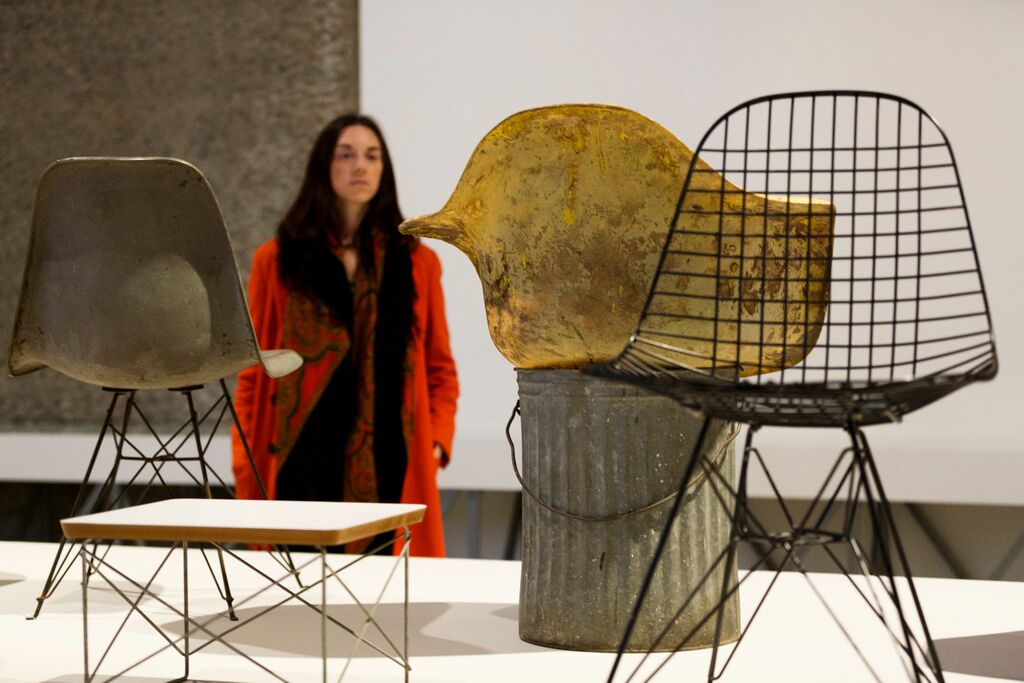 In a filmed question-and-answer session with a French curator, Charles Eames defined design as responding to need, not compromising, but recognising constraint if need be, utilitarian as an expression of purpose. If good enough, design could be recognised as art, and could at times be a solution to industrial problems. The Eames were pragmatic visionaries: they also blurred any divisions between the arts and the sciences – one of their most successful projects was designing an exhibition on numbers, Mathematica (which was also interactive) for IBM.
In a filmed question-and-answer session with a French curator, Charles Eames defined design as responding to need, not compromising, but recognising constraint if need be, utilitarian as an expression of purpose. If good enough, design could be recognised as art, and could at times be a solution to industrial problems. The Eames were pragmatic visionaries: they also blurred any divisions between the arts and the sciences – one of their most successful projects was designing an exhibition on numbers, Mathematica (which was also interactive) for IBM.
Design exhibitions are notoriously and paradoxically difficult to – well – design. There’s a profusion of exhibits here, from magazine covers to documents, chairs to toys, proposals for exhibitions and projects, letters, catalogues and seemingly endless films, with a lot to read on the walls to figure out what you are looking at; designing a design exhibition with both clarity and wit would have been a task for the Eames themselves in a 21st century incarnation. (Installation view, above.)
Best just go to with the flow and take a lot of time to look at the films: some of these are without commentary, looking at related shapes and forms. One such is an amazing sequence of the most outlandishly shaped and coloured aquatic creatures, a kind of pitch for a national federally-financed aquarium for the government’s Department of Fisheries in Washington, DC. It was never realised – quashed by Nixon – but proved influential on the design of all subsequent aquaria.
Another is a three-screen series of images in colour produced for IBM titled “Excellence, G.E.M., or Government, Education, and Management”, which attempted to indicate quality in things as diverse as balloons, headlights, highway interchanges, ancient temples and picket fences. This changing trilogy of found scenes, from shops to house numbers, as well as plants and flowers, successfully absorbs the viewer in a tiny sampling of the profusion of built objects and natural things that the ingenuity of the human world and of nature herself “designs”.
- The World of Charles and Ray Eames at Barbican Art Gallery until 14 February 2016
Gallery: click on first image, below
rating
Share this article
The future of Arts Journalism
You can stop theartsdesk.com closing!
We urgently need financing to survive. Our fundraising drive has thus far raised £49,000 but we need to reach £100,000 or we will be forced to close. Please contribute here: https://gofund.me/c3f6033d
And if you can forward this information to anyone who might assist, we’d be grateful.

Subscribe to theartsdesk.com
Thank you for continuing to read our work on theartsdesk.com. For unlimited access to every article in its entirety, including our archive of more than 15,000 pieces, we're asking for £5 per month or £40 per year. We feel it's a very good deal, and hope you do too.
To take a subscription now simply click here.
And if you're looking for that extra gift for a friend or family member, why not treat them to a theartsdesk.com gift subscription?
more Visual arts
 'We are bowled over!' Thank you for your messages of love and support
Much-appreciated words of commendation from readers and the cultural community
'We are bowled over!' Thank you for your messages of love and support
Much-appreciated words of commendation from readers and the cultural community
 Lee Miller, Tate Britain review - an extraordinary career that remains an enigma
Fashion photographer, artist or war reporter; will the real Lee Miller please step forward?
Lee Miller, Tate Britain review - an extraordinary career that remains an enigma
Fashion photographer, artist or war reporter; will the real Lee Miller please step forward?
 Kerry James Marshall: The Histories, Royal Academy review - a triumphant celebration of blackness
Room after room of glorious paintings
Kerry James Marshall: The Histories, Royal Academy review - a triumphant celebration of blackness
Room after room of glorious paintings
 Folkestone Triennial 2025 - landscape, seascape, art lovers' escape
Locally rooted festival brings home many but not all global concerns
Folkestone Triennial 2025 - landscape, seascape, art lovers' escape
Locally rooted festival brings home many but not all global concerns
 Sir Brian Clarke (1953-2025) - a personal tribute
Remembering an artist with a gift for the transcendent
Sir Brian Clarke (1953-2025) - a personal tribute
Remembering an artist with a gift for the transcendent
 Emily Kam Kngwarray, Tate Modern review - glimpses of another world
Pictures that are an affirmation of belonging
Emily Kam Kngwarray, Tate Modern review - glimpses of another world
Pictures that are an affirmation of belonging
 Kiefer / Van Gogh, Royal Academy review - a pairing of opposites
Small scale intensity meets large scale melodrama
Kiefer / Van Gogh, Royal Academy review - a pairing of opposites
Small scale intensity meets large scale melodrama
 Jenny Saville: The Anatomy of Painting, National Portrait Gallery review - a protégé losing her way
A brilliant painter in search of a worthwhile subject
Jenny Saville: The Anatomy of Painting, National Portrait Gallery review - a protégé losing her way
A brilliant painter in search of a worthwhile subject
 Abstract Erotic, Courtauld Gallery review - sculpture that is sensuous, funny and subversive
Testing the boundaries of good taste, and winning
Abstract Erotic, Courtauld Gallery review - sculpture that is sensuous, funny and subversive
Testing the boundaries of good taste, and winning
 Edward Burra, Tate Britain review - watercolour made mainstream
Social satire with a nasty bite
Edward Burra, Tate Britain review - watercolour made mainstream
Social satire with a nasty bite
 Ithell Colquhoun, Tate Britain review - revelations of a weird and wonderful world
Emanations from the unconscious
Ithell Colquhoun, Tate Britain review - revelations of a weird and wonderful world
Emanations from the unconscious
 Rachel Jones: Gated Canyons, Dulwich Picture Gallery review - teeth with a real bite
Mouths have never looked so good
Rachel Jones: Gated Canyons, Dulwich Picture Gallery review - teeth with a real bite
Mouths have never looked so good







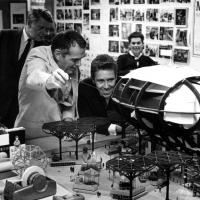
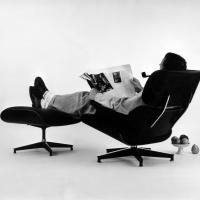


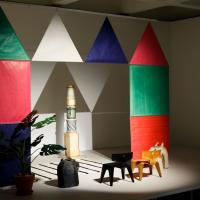

Add comment